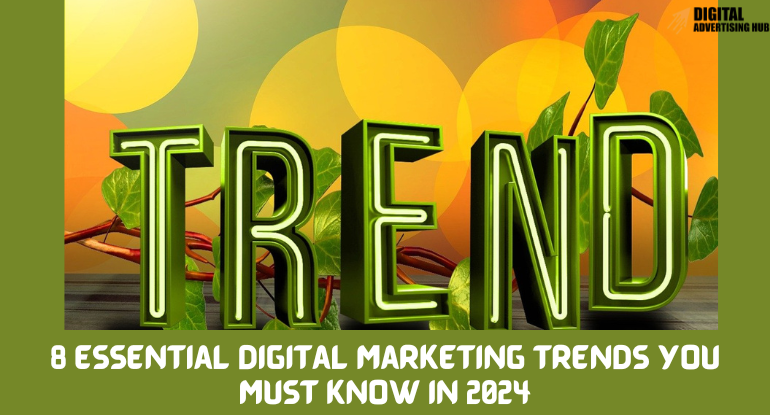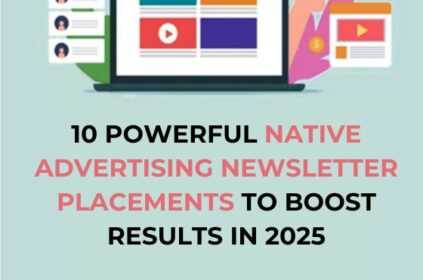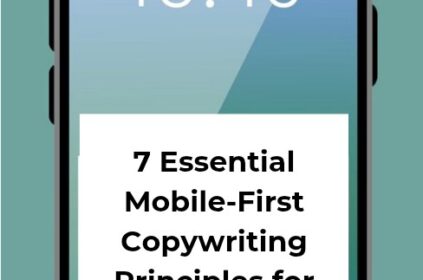Digital marketing is constantly evolving at a breakneck pace. Remember MySpace? Once a dominant social media platform, it’s now a distant memory. The rise of mobile browsing surpassed desktop usage, forcing marketers to completely rethink website design and user experience.
Even just a few years ago, text-based content ruled the web. Today, short-form video content on platforms like TikTok and Instagram Reels captures attention far more effectively.
What worked yesterday might be obsolete today. For marketers, this constant flux presents both a challenge and an opportunity.
The challenge lies in staying ahead of the curve and adapting strategies to keep pace with the latest trends. The opportunity lies in capitalizing on these advancements to reach new audiences, engage customers more effectively, and ultimately achieve superior marketing results.
This comprehensive guide equips you with the knowledge and insights necessary to navigate this ever-changing digital landscape. We embark on a voyage of discovery, exploring eight key trends poised to shape the future of marketing in 2024 and beyond.
From the transformative power of Artificial Intelligence (AI) to the untapped potential of B2B customer communities, we delve into each trend, examining its implications and practical applications.
Whether you’re a seasoned marketing veteran or just starting your journey in this dynamic field, this guide provides valuable takeaways to elevate your marketing strategies. As we set sail, get ready to explore the exciting frontiers of digital marketing trends and discover the tools and techniques that will propel your brand towards success.
Trend 1: Social Media Becomes the New Search Engine for Gen Z
A paradigm shift is underway in how younger generations search for information. Marketers who recognize social media platforms as the new search engines for Gen Z are unlocking innovative ways to connect with this influential demographic.
A recent survey revealed a surprising truth: over half of Gen Z respondents reported using social media platforms as their primary search tool, compared to only 45% who rely on traditional search engines. This trend highlights the growing importance of social media for brand discovery and customer journeys.
So, what are Gen Z users searching for on social media? Here’s a breakdown:
#1. Product Reviews and Recommendations: Gen Z values the opinions and experiences of their peers. Social media platforms provide a treasure trove of user-generated content, including product reviews, unboxing videos, and recommendation posts.
#2. Tutorial Videos: The short-form video format thrives on social media, offering a plethora of instructional content. Gen Z users can find everything from makeup tutorials and cooking demonstrations to DIY home improvement hacks on platforms like YouTube, TikTok, and Instagram Reels.
#3. Trending Topics and News: Social media has become a real-time newsfeed for many users. Gen Z leverages these platforms to stay informed about current events, trending topics, and cultural movements.
#4. Inspiration for Various Interests: Social media serves as a wellspring of inspiration for Gen Z. They turn to these platforms for creative ideas and visual inspiration related to fashion, travel destinations, home decor, and countless other interests.
For example, instead of searching “iPhone 12 features” on Google, they’d look for it on YouTube.
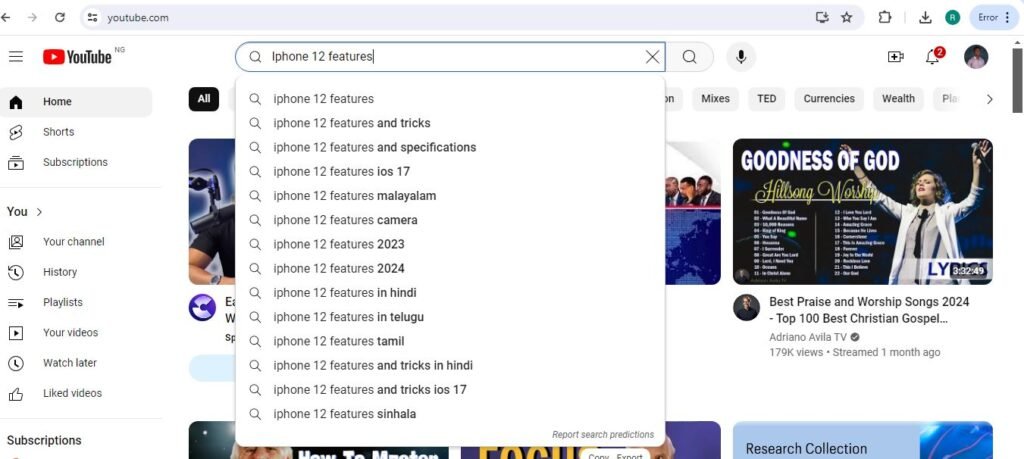
Implications for Your Brand
This digital advertising trend presents a golden opportunity for brands to connect with Gen Z audiences on their preferred platforms. By creating engaging and informative content that aligns with their search intent, brands can establish themselves as thought leaders, generate brand awareness, and ultimately drive conversions.
Here are some ways brands can take advantage of this social media search phenomenon:
#1. Content Strategy Tailored for Search Intent: Research trending topics and keywords relevant to your brand that Gen Z is likely searching for on social media. Integrate these keywords naturally into your content strategy, including video descriptions, captions, and social media bios. Meanwhile, be sure to learn the 30 Effective Strategies For Avoiding Keyword Stuffing In Content.
#2. Authentic Influencer Partnerships: Partner with Gen Z influencers who resonate with your target audience. Leverage their reach and credibility to create sponsored content that feels organic and aligns with their usual posting style. This fosters trust and encourages viewers to engage with the brand message.
#3. Short-Form Educational Content: Embrace the power of short-form video formats like TikTok and Instagram Reels to create bite-sized educational content. Offer product tutorials, answer frequently asked questions, or showcase behind-the-scenes glimpses into your brand story.
#4. User-Generated Content (UGC) Campaigns: Encourage user-generated content by launching contests or hashtag challenges that incentivize users to create content related to your brand. This not only expands your reach but also leverages the authenticity and trust associated with user-generated reviews and recommendations.
#5. Community Building and Engagement: Foster a vibrant community around your brand on social media platforms. Respond to comments and messages promptly, host interactive polls or Q&A sessions, and encourage user-to-user interaction. This builds brand loyalty and positions you as a trusted resource within the social media search landscape.
By implementing these strategies, brands can effectively navigate the evolving search habits of Gen Z and leverage the power of social media to connect with this influential demographic in a meaningful and impactful way.
Trend 2: The Rise of Artificial Intelligence (AI) in Marketing

Artificial intelligence (AI) is no longer a theoretical concept; it is now a firmly established element within the digital marketing sphere. Marketers are leveraging AI’s capabilities to automate repetitive tasks, generate content, and personalize user experiences at scale.
Semrush surveyed over 2,600 Small and Medium-Sized Businesses (SMBs) for 2024 AI Content Marketing Report. The data revealed that a significant 67% of businesses are already utilizing AI for content marketing and Search Engine Optimization (SEO) purposes.
However, the most significant advancements lie in the cutting-edge applications of AI. Consider, for instance, text-to-video content creation. This technology allows for the generation of high-quality videos from basic text instructions.
OpenAI’s groundbreaking text-to-video model, Sora, offers a glimpse into this future. While currently in beta testing, tools like Sora have the potential to revolutionize video marketing, particularly for the creation of short-form content.
Personalization is another area where AI shines. By analyzing customer demographics, browsing history, and purchasing behavior, AI can predict user preferences and tailor your messages and offers accordingly.
Tips for Digital Marketers to Catch Up with the AI Waves
The rise of AI in marketing is undeniable. With its ability to automate tasks, generate content, and personalize experiences, AI offers marketers a powerful tool to optimize campaigns and elevate their strategies. But how can you, as a digital marketer, leverage this trend and ensure you’re not left behind? Here are a few tips to get you started:
#1. Embrace AI for Content Creation:
Experiment with AI writing assistants: Explore platforms like ChatGPT or Gemini to help you generate content ideas, write headlines, and craft outlines. Remember, AI-generated content shouldn’t be published verbatim. Use it as a springboard for your creativity, then edit and refine it to ensure brand voice and accuracy
Consider AI-powered social media tools: Schedule posts, analyze audience demographics, and identify trending topics with the help of AI-powered social media management tools like Hootsuite or Buffer.
Stay informed about text-to-video AI: Tools like OpenAI’s Sora are still under development, but keep an eye on advancements in this area. When these tools become more accessible, explore their potential for creating engaging short-form video content.
#2. Personalization is Key:
Invest in a Customer Relationship Management (CRM) system: CRMs allow you to gather and analyze customer data, including demographics, purchase history, and website behavior. Use this data to segment your audience and tailor your messaging accordingly.
Utilize AI-powered marketing automation platforms: These platforms leverage customer data to trigger personalized emails, product recommendations, and website experiences. Explore platforms like HubSpot or Pardot to personalize your marketing efforts at scale.
#3. Upskill and Stay Ahead:
Take online courses: Numerous online platforms offer courses on AI marketing fundamentals and applications. Platforms like Coursera, Udemy, and LinkedIn Learning can equip you with the knowledge to leverage AI effectively.
Follow industry blogs and publications: Stay updated on the latest AI marketing trends by subscribing to relevant blogs and publications. Resources like Search Engine Land, Social Media Today, and Marketing Dive frequently cover AI advancements and their implications for marketers.
#4. Remember the Human Touch:
While AI offers fantastic automation and personalization capabilities, the human element remains crucial. Don’t let AI replace creativity and critical thinking. Use AI as a tool to enhance your human expertise, not replace it.
Focus on developing compelling content strategies, fostering meaningful customer relationships, and delivering exceptional brand experiences.
By embracing these tips and staying curious about AI’s potential, you can ensure your marketing strategies remain relevant and capitalize on the exciting future AI holds for the digital marketing landscape.
Trend 3: The Importance of Expertise-Driven Content on a Rise
The era of churning out generic content is over. Consumers today seek originality and value. This is where expert-led content comes into play. This type of content, created by or in collaboration with industry experts, boasts inherent authority and credibility. It delves deeper into complex topics, offering valuable insights and solutions that resonate with your target audience.
Expertise is not the sole factor, however. The recent influx of low-quality content, generated by AI in an attempt to achieve rapid content scaling, has highlighted the importance of human-centric content.
Search engines like Google prioritize content that adheres to E-E-A-T guidelines (Expertise, Experience, Authoritativeness, and Trustworthiness). Expert-led content inherently checks these boxes, positioning you as a reliable source of information and increasing your chances of achieving higher search engine rankings.
Crafting Compelling Expert-Led Content: A Strategic Guide
Expert-led content offers a powerful way to elevate your brand image, establish thought leadership, and attract a highly engaged audience. However, simply featuring an expert isn’t enough. To maximize the impact of your content, a strategic approach is essential. Here’s a breakdown of the key considerations you need to address:
#1. Selecting the Right Expert:
1. Choose an expert with demonstrably strong qualifications in the field you’re addressing. Look for relevant degrees, certifications, or industry awards that validate their knowledge and experience.
2. Alignment with Brand Values: Ensure the expert’s personal brand aligns with your company’s values and messaging. You don’t want to partner with someone whose views contradict your core principles.
3. Communication Skills: Effective communication is key. The expert should be able to explain complex topics in a clear, concise, and engaging manner, resonating with your target audience.
#2. Focus on Depth and Insights:
1. Go Beyond the Basics: Don’t settle for generic information readily available online. Partner with your expert to deliver in-depth knowledge and unique insights that showcase their expertise and offer genuine value to your audience.
2. Address Industry Challenges: Focus on tackling pain points and addressing current issues relevant to your target audience. This demonstrates your understanding of industry trends and positions you as a thought leader offering valuable solutions.
#3. Tailoring Content Formats:
1. Know Your Audience: Understanding your target audience’s preferred content formats is crucial. Do they favor long-form blog posts, bite-sized infographics, or interactive webinars? Choose a format that aligns with their consumption habits and attention spans.
2. Variety is Key: Experiment with different formats to cater to diverse learning styles. Offer a mix of written content, video interviews, podcasts, or infographics to keep your audience engaged.
#4. Maximizing Reach Through Collaboration:
1. Promote Together: Work with the expert to promote the co-created content across their channels as well as yours. This leverages their existing audience and expands your reach significantly.
2. Joint Appearances & Social Media Engagement: Consider co-hosting webinars, live Q&A sessions, or social media takeovers to generate excitement and encourage audience participation.
#5. SEO Optimization and Repurposing:
1. Search Engine Visibility: Optimize your content with relevant keywords to ensure it ranks well in search engine results. This increases organic traffic and positions your expert-led content as a valuable resource. Read our guide: Mastering Keyword Placement: 14 Best Practices for SEO Optimization

2. Content Repurposing: Don’t let your content gather dust! Repurpose it for different platforms. Extract key takeaways for social media posts, create video snippets for YouTube, or transform long-form content into infographics.
By following these strategic considerations, you can create compelling expert-led content that not only informs and educates your audience, but also establishes you as a trusted authority within your industry.
Trend 4: The Dominance of Short-Form Video Content
Short-form video content, delivering value or entertainment in a concise timeframe, is experiencing explosive growth. In fact, the data surveyed by Semrush for the State of Content Marketing 2023 Global Report reveals that short-form video is the top-performing video format among marketers and business owners.
These videos typically range from a few seconds to a few minutes in length, depending on the platform. They are ideally suited for social media platforms such as TikTok, Instagram, LinkedIn, and YouTube.
To maximize the impact of your short-form videos, consider these best practices:
#1. Platform-Specific Optimization: Tailor your videos for each platform. What works on TikTok might not resonate on Instagram Reels or YouTube Shorts. Study the nuances and trends of each platform to create effective videos.
#2. Captivating Introductions: Grab attention from the outset with visually appealing graphics, on-screen text, or a compelling question.
#3. Clear and Concise Messaging: Despite the short timeframe, strive to convey one key message or takeaway per video.
#4. Brand Alignment: Maintain consistency with your brand’s style and values. Utilize logos, colors, and messaging that reflect your brand identity, making your content instantly recognizable.
#5. Content Repurposing: Edit longer videos into attention-grabbing clips. Transform webinar highlights into short snippets to maximize content utilization.
#6. Strategic Trend Participation: Occasionally participating in trending topics or challenges can boost discoverability and engagement, but ensure relevance to your target audience.
By adhering to these guidelines, you can leverage the power of short-form video content to engage your audience, build brand awareness, and achieve your marketing objectives.
Trend 5: Programmatic SEO Streamlines Large-Scale Optimization
Programmatic SEO refers to the automation of specific SEO tasks to create and optimize webpages at scale. This approach is particularly beneficial for brands managing large websites with thousands of pages, such as e-commerce sites with extensive product catalogs, or dynamic websites with frequently changing content, like travel booking platforms with numerous location pages.
The primary advantage of programmatic SEO lies in its ability to efficiently generate multiple pages optimized for an entire category of target keywords using a pre-defined template. However, successful implementation necessitates coding expertise and meticulous execution.
Benefits of Programmatic SEO Beyond Efficiency
While efficiency is a key advantage, programmatic SEO offers additional benefits for large websites:
#1. Consistency: Programmatic SEO ensures consistent optimization across a large number of pages, minimizing the risk of human error and maintaining a uniform approach to on-page SEO elements like title tags, meta descriptions, and header hierarchies.
#2. Scalability: As your website grows and new content is added, programmatic SEO allows you to seamlessly integrate these pages into your optimization strategy without a significant manual effort.
#3. Data-Driven Insights: Programmatic SEO tools often provide data and analytics to track the performance of optimized pages. This data can be used to refine your approach and identify areas for further improvement.
Pilot Project Initiation: A Measured Approach
Before embarking on a large-scale programmatic SEO implementation, it’s crucial to initiate a pilot project. This allows you to assess the effectiveness of the approach on your specific website and content structure:
#1. Select a Representative Sample: Choose a section or category of your website that is representative of the broader content you intend to optimize. This could be a product category on an e-commerce site or a specific service area on a business website.
#2. Define Success Metrics: Determine the key performance indicators (KPIs) you will use to measure the success of the pilot project. This might include organic traffic growth, keyword rankings, conversion rates, or a combination of these metrics.
#3. Implement Programmatic SEO: Utilize your chosen programmatic SEO tool or develop a custom script to optimize the selected pages. This will involve defining templates, incorporating target keywords, and ensuring proper on-page optimization.
#4. Monitor and Analyze: Closely monitor the performance of the optimized pages throughout the pilot period. Track your defined KPIs and compare them to historical data to gauge the impact of programmatic SEO.
#5. Evaluate and Refine: Based on the results of your pilot project, assess the effectiveness of programmatic SEO for your website. Analyze what worked well and identify areas for improvement. You may need to refine your templates, target keywords, or overall approach before large-scale implementation.
#6. Content Quality Remains Paramount: Programmatic SEO should not replace the importance of high-quality content. Even with optimized pages, valuable and engaging content is essential for attracting and retaining organic traffic.
#7. Technical SEO Audit: Before implementing programmatic SEO, conduct a thorough technical SEO audit of your website. This will help identify underlying technical issues that could hinder your optimization efforts, regardless of your approach.
#8. Ongoing Monitoring: Programmatic SEO is not a one-time solution. Regularly monitor the performance of your optimized pages and adapt your strategy as needed based on search engine algorithm updates and industry best practices.
By following these steps, you can leverage programmatic SEO effectively to streamline website optimization for large-scale content management.
Trend 6: The Strategic Rise of B2B Influencer Marketing
Influencer marketing has long been a staple in the Business-to-Consumer (B2C) sector, leveraging collaborations with relevant influencers to promote products, services, or brands. However, its influence is now extending to the Business-to-Business (B2B) landscape.
This shift stems from the growing recognition of B2B influencers – often subject matter experts or industry thought leaders – who command the attention of a significant number of industry professionals seeking reliable information and guidance within their field.
For instance, Jason Lemkin, the founder of SaaStr, a leading community for business software, is a highly respected figure. Many Software as a Service (SaaS) professionals, including CEOs, follow him and attend SaaStr events. If you operate a SaaS business, partnering with an industry leader like Jason could leverage his authority and influence to propel your brand awareness.
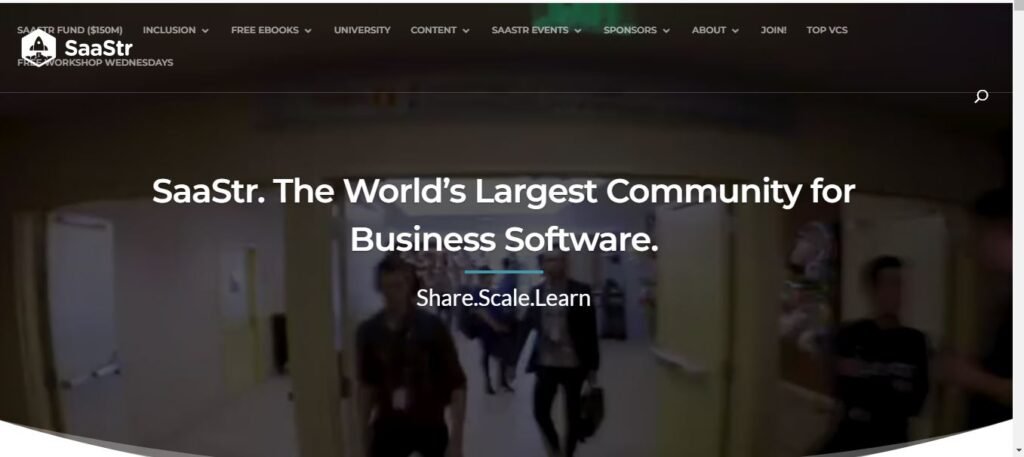
Crucially, there are distinct differences between B2B and B2C influencer marketing approaches:
#1. Focus on Long-Term Relationships: B2B influencer marketing prioritizes cultivating long-term, mutually beneficial relationships and establishing credibility within the industry.
#2. Engagement Over Sales: While B2C marketing often aims for short-term promotional gains or immediate sales, B2B influencer marketing emphasizes fostering engagement through in-depth discussions, webinars, and case studies that showcase the influencer’s expertise.
#3. Platform Preferences: B2C influencers typically promote products through lifestyle content on mainstream social platforms like Instagram, TikTok, and Facebook. Conversely, B2B influencers are more likely to engage in professional discussions, host webinars, and create data-driven case studies that reflect their knowledge and authority.
Partnering with the right thought leader is essential for a successful B2B influencer marketing campaign. The Influencer Analytics application streamlines this process:
#1. Identify Potential Partners: Within the Influencer Analytics app, navigate to “Influencer Discovery” and select your desired platform (e.g., YouTube).
#2. Targeted Search: Explore influencers or search for specific channels by name using the search bar.
#3. Performance Insights: Gain a comprehensive overview of the channel’s performance metrics, including subscriber count, average views, integration costs, and more.
#Data-Driven Decisions: Utilize the detailed insights provided to identify the most suitable influencers for your B2B marketing goals.
By following these steps and understanding the core principles of B2B influencer marketing, you can leverage the power of industry thought leaders to build brand awareness, establish credibility, and connect with your target audience on a deeper level.
Trend 7: The Allure of Native Advertising for Brands
Native advertising has emerged as a powerful tool for brands seeking to capture user attention without disrupting their browsing experience. Unlike traditional display ads that often appear as intrusive banners, native ads seamlessly blend with the surrounding content and platform aesthetic.
This subtle approach fosters a more user-friendly advertising experience, leading to increased engagement and brand recall.
The key to native advertising’s success lies in its ability to deceive the user (in a positive way!). Ads are meticulously crafted to appear organic, mimicking the style and format of the surrounding editorial content. For instance, sponsored content recommendations on a news website might perfectly match the layout and visual elements of the platform’s authentic articles.
The only subtle indicator of their paid nature might be a small “promoted” or “recommended” label. This unobtrusive approach allows the ad to blend seamlessly into the user’s content stream, increasing the likelihood of it being noticed and engaged with.
Benefits of Native Advertising
There are several compelling reasons why native advertising is captivating brands:
#1. Enhanced User Experience (UX): Traditional banner ads can be disruptive, interrupting the user’s flow and potentially causing annoyance. Native ads, on the other hand, integrate seamlessly with the content, offering a less intrusive experience.
Users are more receptive to consuming content that incorporates well-placed native ads, particularly if they are relevant and informative.
#2. Increased Engagement: By aligning with the surrounding content, native ads have a higher chance of piquing user interest and encouraging interaction.
Imagine scrolling through a social media feed and encountering a native ad that appears like an interesting article related to your specific hobbies. The chances of you clicking on it are significantly higher compared to a traditional display ad that seems out of place.
#3. Improved Targeting: Native advertising platforms often boast advanced targeting capabilities. Brands can leverage these features to deliver their ads to a highly relevant audience. By considering user demographics, interests, and online behavior, native advertising platforms ensure that the ads are displayed to individuals who are most likely to find them valuable.
#4. Credibility Boost: Because native ads appear alongside trusted content, they inherit a degree of credibility by association. Users are more likely to trust and consider a product or service presented in a native format.
#5. Brand Awareness Builder: Native advertising excels at subtly introducing a brand or product to a new audience. Repeated exposure to well-crafted native ads builds brand awareness and familiarity over time.
#6. Scalability and Flexibility: Native advertising campaigns can be easily scaled up or down depending on your budget and goals. Additionally, the format offers a high degree of flexibility in terms of content type, allowing you to tailor your message for maximum impact.
In conclusion, native advertising presents a compelling proposition for brands seeking to engage audiences in a non-disruptive way. With its ability to enhance user experience, boost engagement, and deliver targeted messaging, native advertising is a powerful tool for achieving your marketing objectives.
Crafting Compelling Native Ad Campaigns
To maximize the effectiveness of your native advertising campaigns, consider these key best practices:
#1. Compelling Headlines: Don’t underestimate the power of a captivating headline. Craft headlines that grab user attention and entice them to click without resorting to clickbait tactics. Focus on clear and concise messaging that accurately reflects the value proposition of your advertised product or service.
#2. Conversational Copy: The tone of your ad copy plays a crucial role in user engagement. Strive for a friendly and conversational tone that resonates with your target audience. Imagine you’re having a casual conversation with a potential customer; write your ad copy in the same way.
#3. Test Different Formats: Native advertising platforms offer a variety of ad formats, such as in-feed ads, content recommendation ads, and search ads. Experiment with different formats to determine which resonate most effectively with your audience. Analyze the performance of each format and adjust your strategy accordingly.
#4. Analyze Your Competitors: Utilize Semrush’s Advertising Research tool to gain valuable insights into your competitors’ paid search strategies. Analyze their target keywords, ad copy, and overall approach to native advertising. Leverage this knowledge to refine your own campaigns and develop a competitive edge.
By following these best practices and understanding the core principles of native advertising, you can craft engaging and effective ad campaigns that seamlessly integrate with the user experience. This approach will ultimately drive brand awareness, increase website traffic, and generate valuable conversions.
Take your learning further by studying the 19 Successful and Effective Native Advertising Examples To Copy.
Trend 8: The Untapped Potential of B2B Customer Communities
Customer communities have long been a cornerstone of Business-to-Consumer (B2C) marketing strategies, fostering brand loyalty and generating excitement around new products.
However, their application in the Business-to-Business (B2B) landscape is often overlooked. This trend highlights the growing recognition of B2B customer communities as valuable assets for building stronger relationships, driving product innovation, and generating valuable customer insights.
The Power of Shared Experiences in B2B Communities:
B2B customer communities provide a dedicated space for businesses to connect with their customers on a deeper level. These communities can take various forms, from online forums and social media groups to industry conferences or even regional meetups.
The format depends on your target audience and industry, but the core purpose remains the same: fostering a sense of community and shared experiences among your customers.
Here’s how B2B customer communities can benefit your brand:
#1. Enhanced Customer Engagement: Communities create an environment for ongoing engagement with your customer base. Imagine a forum dedicated to your marketing automation software.
Customers can share challenges they’re facing with specific marketing campaigns, offer solutions based on their experiences, and participate in discussions around industry best practices and new features within your software. This two-way communication strengthens relationships, fosters collaboration, and increases customer satisfaction.
For example, HubSpot, a leading marketing automation platform, boasts a thriving online community forum. Customers can ask questions, troubleshoot issues, and share best practices related to HubSpot’s marketing tools.
HubSpot actively participates in the forum, providing support and guidance to its customer base. This fosters a sense of community and strengthens customer loyalty.
#2. Valuable Customer Insights: By actively listening and participating in the community, businesses gain access to a wealth of customer insights. Customers share their experiences, frustrations, and needs, providing invaluable feedback that can be used to improve products, develop new features, and refine marketing strategies.
For instance, imagine a software company managing a customer community where users can submit feature requests and upvote ideas suggested by others.
This allows the company to directly gauge customer needs and prioritize product development efforts based on real-world user feedback. This data-driven approach ensures that the company is investing resources into features that will have the most significant impact on its customer base.
#3. Organic Brand Advocacy: Thriving B2B customer communities foster organic brand advocacy. Satisfied customers who find value in the community are more likely to recommend your brand to their peers and colleagues within their professional networks.
Imagine a project management software company whose customer community facilitates knowledge-sharing and problem-solving among project managers. These satisfied customers become vocal advocates for the software within their own organizations, leading to increased brand awareness and organic customer acquisition.
For example, Salesforce, a customer relationship management (CRM) platform, has cultivated a strong online community called Trailblazer Community. This community empowers Salesforce users to connect, share success stories, and learn from each other. By fostering a sense of community and advocacy, Salesforce leverages its user base to promote its CRM solutions.
Building a Thriving B2B Customer Community:
Building and nurturing a thriving B2B customer community requires a well-defined strategy and ongoing commitment:
#1. Clearly Defined Value Proposition: Articulate the value proposition for your community. What benefits will members derive from participating? Will they gain access to exclusive content, early product releases, or direct support channels? Clearly communicate these benefits to encourage customer signup.
#2. Consistent Content and Engagement: Provide valuable and informative content within the community. This could include industry thought leadership articles, product tutorials, customer success stories, or even online events like webinars or live Q&A sessions. Actively participate in discussions, respond to inquiries promptly, and demonstrate your commitment to fostering a vibrant community.
For example, a social media management platform might host regular “Ask Me Anything” (AMA) sessions within its community, featuring industry experts or the company’s product development team. This interactive format provides valuable insights to customers while showcasing the company’s commitment to open communication.
#3. Leverage Community Management Tools: Utilize social media management platforms or dedicated community management software to streamline communication, monitor discussions, analyze member engagement, and identify trends within the community.
Popular community management tools include:
1. CM.com: Provides a comprehensive platform for managing online communities, including features for content moderation, member engagement analytics, and targeted communication.
2. Sparkloft: Specializes in fostering brand communities through social media engagement tools, allowing you to cultivate discussions and encourage member-to-member interaction.
By following these steps and understanding the potential of B2B customer communities, you can cultivate a dedicated space for customer interaction, idea generation, and brand advocacy.
This will ultimately lead to stronger customer relationships, improved product development based on real user needs, and a more loyal customer base who become vocal proponents of your brand within their professional networks.
Navigate Digital Marketing Trends with AdsTargets
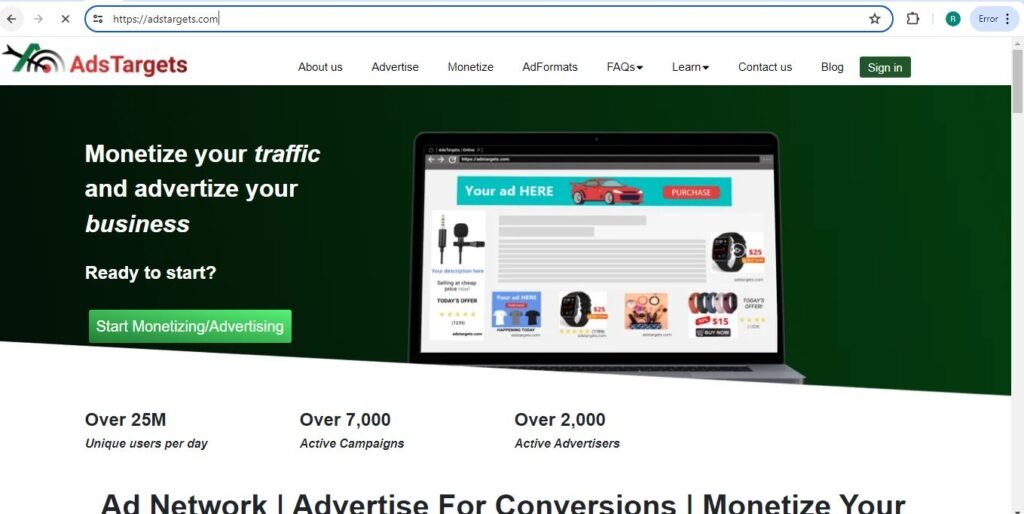
Staying ahead of the curve in digital marketing can be challenging, but AdsTargets can be your bridge to success in this ever-evolving landscape.
AdsTargets is a global Ad Network connecting advertisers with publishers across 170+ countries. Founded in 2016, we’ve continuously refined our in-house AdTech platform, delivering hundreds of thousands of ad campaigns and optimizing results for both advertisers and publishers.
Our Commitment to You:
#1. Enhanced Ad Targeting: Our team of experts is dedicated to developing innovative tools that ensure your ads reach the right audience, maximizing your return on investment (ROI).
#2. Diverse Ad Formats: We offer a comprehensive suite of ad formats, including Banner Ads, Text Ads, Native Ads, eCommerce Ads, Video Ads, and Interstitial Ads, allowing you to tailor your campaigns to your specific goals.
#3. Flexible Pricing Models: Choose from various pricing models like CPC (Cost-per-Click), CPM (Cost-per-Mille), CPA (Cost-per-Acquisition), CPV (Cost-per-View), and CPD (Cost-per-Day) to suit your advertising budget and campaign objectives.
#4. Monetization for Publishers: Our platform empowers publishers to monetize their websites, blogs, and apps through various advertising options. We offer a transparent and fair revenue share, with publishers receiving commissions ranging from 80% to 90%.
#5. Lucrative Referral Program: Both advertisers and publishers can earn an additional 15% through our referral program, further boosting their revenue potential.
Benefits for Advertisers:
1. Reach targeted audiences globally.
2. Maximize ad campaign effectiveness with cutting-edge targeting tools.
3. Choose from diverse ad formats to suit your marketing goals.
4. Benefit from flexible pricing models to optimize your budget.
Benefits for Publishers:
1. Monetize your website, blog, or app with various ad formats.
2. Earn a high commission on ad revenue (80-90%).
3. Increase your income through our referral program (15% bonus).
Navigate the digital marketing landscape with confidence. Partner with AdsTargets today and unlock a world of possibilities for your advertising and publishing needs!
Conclusion
In conclusion, the digital marketing landscape is constantly evolving, and these eight trends we’ve explored offer a glimpse into the exciting future that awaits. From the power of AI to the untapped potential of B2B customer communities, these advancements present a wealth of opportunities for brands to connect with their audiences in new and innovative ways.
By embracing these trends and staying curious about the ever-changing digital advertising, you can ensure your marketing strategies remain relevant and effective. So, don’t be afraid to experiment, leverage new technologies, and prioritize human-centric experiences. By adapting to the ever-shifting tides of digital marketing, you can position your brand for success and navigate the exciting frontiers that lie ahead.

